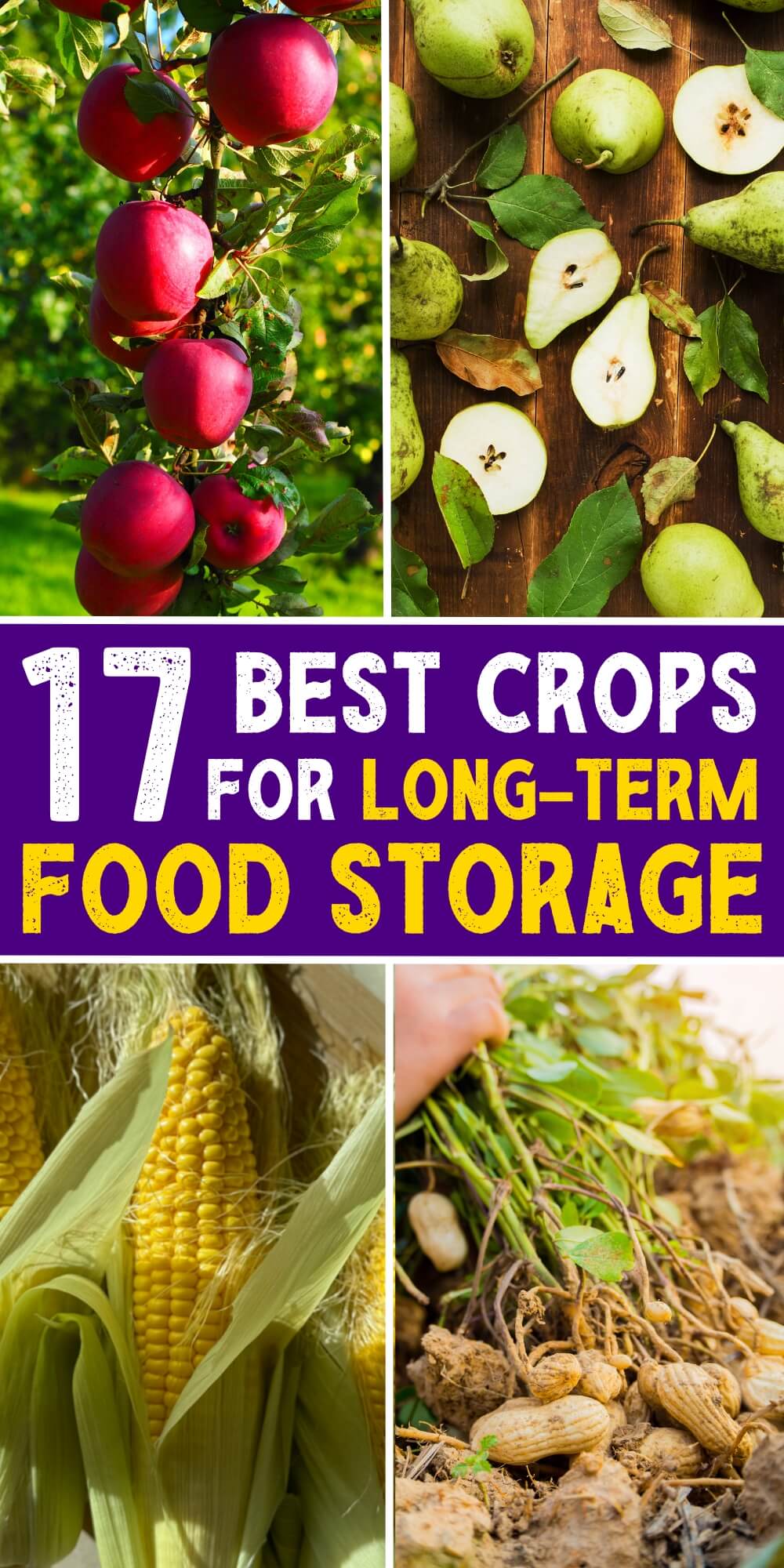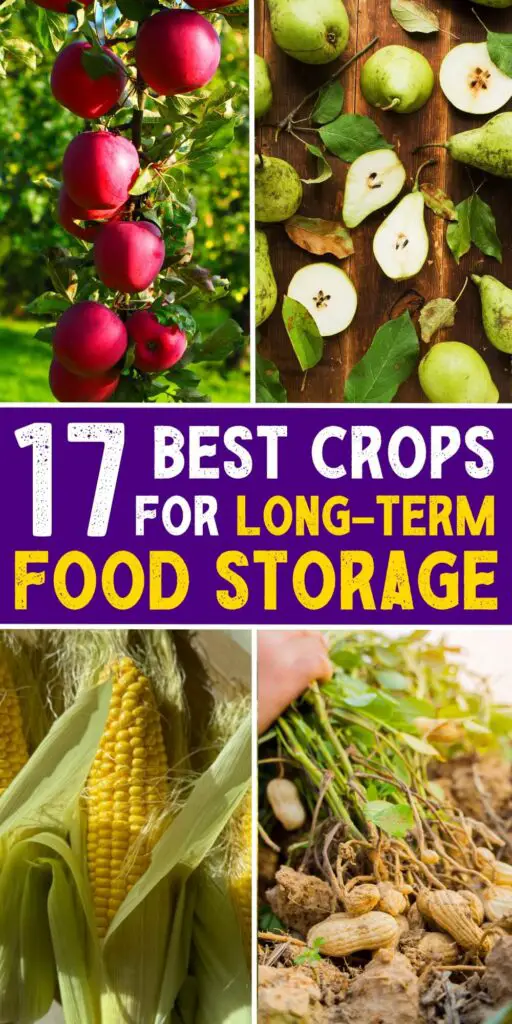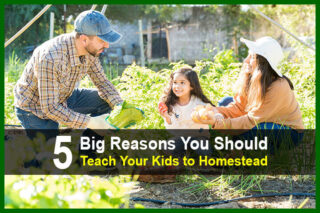Estimated reading time: 6 minutes
Having a pantry or cellar full of stockpiled food and supplies gives a person a feeling of security. It is comforting knowing that no matter what comes to pass in the world outside, your family will be well fed. The fact that you grew and preserved these nutritious foods yourself provides an even bigger sense of accomplishment.
One of the keys to a successful harvest and storage is choosing the right seeds or stock to plant in the beginning. Choose varieties that are known for their long-term storage properties. Many times these will be heirloom or open-pollinated plants.
Experiment to find out what grows best in your area, provides a high yield, and ultimately, how it does in storage. You will also want to grow more than you think you'll need in order to account for any crop failure or spoilage once in storage.
The other thing to remember is that how you harvest, prepare, and store the produce will also affect how long it will remain usable. While there are many methods of food preservation, this article will focus on produce and root crops that lend themselves well to being stored as they are or dried.
Want to save this post for later? Click Here to Pin It On Pinterest!
Apples and Pears
The best apples and pears to choose – with preservation and storage in mind, are those with firmer, thicker skins. Pick the fruit when ripe and then store in boxes or crates that are well-ventilated.
Air circulation is important as these fruits give off a gas called ethylene that builds up and can ruin your produce. Place sheets of paper or even shredded paper between the layers of fruit to keep them from touching and bruising each other.
The best temperature range for long-term fruit storage is 32-40 degrees Fahrenheit with 80-90% humidity. The ethylene gas the fruit produces as it ripens is detrimental to many vegetables, causing them to rot.
Because of this, it is best to store these fruits away from other produce. Expect the fruit to remain usable for up to 6 months, depending upon the variety. Regularly sort through and remove damaged or deteriorating fruit.
More information:
Beans, Corn, and Nuts
Dried beans, grain corn, and various nut varieties are easy crops to grow and preserve for future use. Plan on storing each of these items in dark, dry areas in airtight containers. Be sure that your bean varieties are completely dried before storing them as just a small bit of moisture can breed mold and ruin the beans.
Grain corn can be completely dried on the cob and then stored as-is (on the cob) in open bins. It can also be shelled with the dried kernels stored in sealed jars. Grain corn can be used as popcorn or ground into cornmeal to be used for baking.
Nut varieties have different shelf lives according to the amount of oils in them. Two of the longer lasting types of nuts are almonds and cashews. You can expect them to last up to a year or so when properly stored.
Other nuts such as walnuts, macadamias, hazelnuts, and pecans tend to go rancid a little sooner. 6-8 months is usually their limit before they go bad. All of the varieties should all be kept in sealed containers in cool, dark, dry locations. A freezer will make any of them last even longer.
More information:
- Tips for Storing Dried Beans Long Term To Avoid Waste
- How to Store Corn for the Freshest, Sweetest Flavor
- The Best Ways to Keep Nuts from Going Bad
Root Crops
Most root crops enjoy cold and humid storage methods to ensure the longest freshness. They tend to do their best in temperatures ranging from 32-45 degrees Fahrenheit.
Packing the root in boxes with layers of moist sand, sawdust, straw, or shredded paper is a popular way to keep them. You may have to occasionally mist them to keep them moist through the winter.
You can also try the “mound” or “clamp” method with some of the tubers. This is where you alternate layers of straw and root vegetables on the ground in a mound and then cover it, leaving a space for ventilation on top.
This method allows the snow to cover the mound and create a refrigeration effect without the ground, and your produce freezing.
Root crops that benefit from either of these storage methods include:
Pumpkin and Winter Squash
Pumpkins and winter squash should be allowed to dry and cure for 1-2 weeks before storing. This drying off can be done in a warm, well-ventilated room or area.
Once dry, both types of gourds can be stored in a cool environment with moderate humidity. Bushel baskets, shallow containers or trays, and small, open crates are often used. The produce can also be placed directly on shelves when needed.
Even if you only decide to add just one or two of these crops to your garden this year, you will be ahead of the game. You are well on your way to providing healthy, nutritious food for your family that you can say you grew and preserved yourself.
Cabbage and Garlic: More Long-Storing Crops to Grow
Adding just a couple more storage-friendly crops to your garden can make a big difference when it comes to self-sufficiency. Both cabbage and garlic store well with minimal effort and provide essential nutrients for your pantry.
Cabbage
Cabbage is a cold-hardy vegetable that not only produces a high yield but also has an impressive shelf life when properly stored. The best varieties for long-term storage are late-season or winter cabbages, which have tighter, denser heads.
To store fresh cabbage, keep it in a root cellar, basement, or refrigerator at 32-40°F with high humidity. Whole heads can last 3 to 4 months when stored correctly. Avoid washing cabbage before storage, as excess moisture can lead to mold.
Another great way to preserve cabbage is by fermenting it into sauerkraut, which extends its shelf life even further and adds beneficial probiotics to your diet.
More Information:
Garlic
Garlic is a must-have for any survival pantry. It’s easy to grow, simple to store, and has powerful medicinal properties. Softneck varieties tend to store longer than hardneck varieties, sometimes lasting up to 9-12 months.
To store garlic long-term, cure the bulbs by hanging them in a warm, dry place for 2-4 weeks until the outer layers become papery. Once cured, store garlic in a cool, dry place with good airflow. Avoid sealed containers, as they can trap moisture and cause the garlic to rot.
If you want an even longer-lasting option, garlic can be dehydrated and ground into a powder or preserved in oil and frozen.
More Information:
About the Author: Julie Dees is a freelance writer who also happens to be a real, lifelong cowgirl. She enjoys writing about her animals, gardening, homesteading, and just about anything related to the outdoor life.
Like this post? Don't Forget to Pin It On Pinterest!
You May Also Like:












Here is something I thought of right out of the blue. In the event of a nuclear holocaust how will anyone be able to grow anything except self-pollinating plants? Bees and birds will be extinct or close to it.
yea…..reading that doesn’t leave me with happy thoughts, I believe I read somewhere that most fruit grown in Japan is hand pollinated.